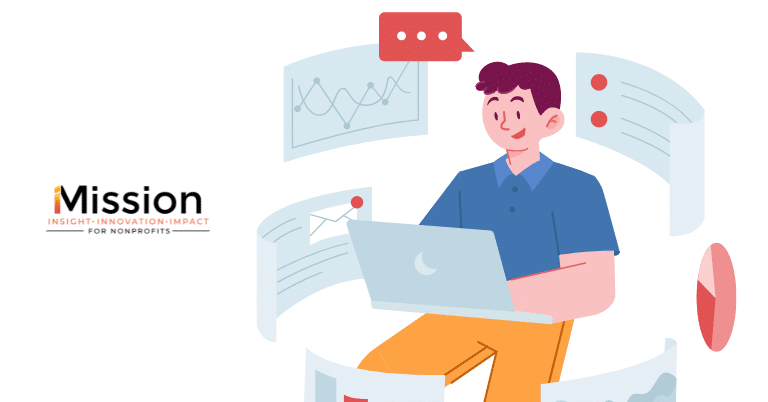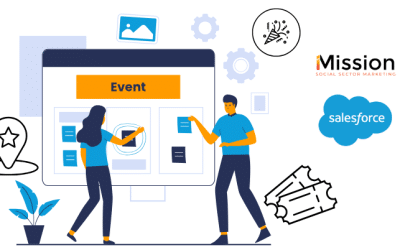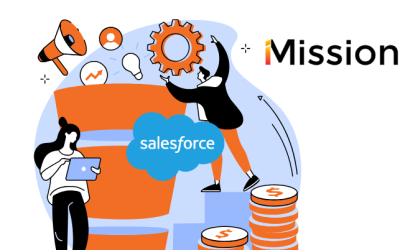Your fundraising emails used to get good, if not great, results. Now, you’re finding that email performance is declining. Maybe even tanking. What’s going on? It’s possible that you are not in compliance with a set of changes made to email deliverability by Google and Yahoo on February 1, 2024. If you’re not, your emails may be getting sent to spam folders or maybe simply not even being delivered.
3 Big Changes to Email Deliverability
Gmail and Yahoo just announced some major changes to email deliverability, all of which took effect on February 1, 2024. As these two email services are likely to include a majority of your subscribers (Gmail reports having 1.8 billion active users, and Yahoo has about 225 million users each month) – you’ll want to make sure you’re in compliance with the new rules.
Here’s what to know:
1. Gmail and Yahoo will now require senders to authenticate their emails
First off, we’ll need to define a few things.
In simple terms, email authentication is the process of verifying that an email is coming from a trusted source rather than from a forged sender.
There are three major email authentication methods:
- Sender Policy Framework (SPF)
- Domainkeys Identified Mail (DKIM), and
- Domain-based Message Authentication, Reporting, and Conformance (DMARC).
These three methods work together: SPF checks whether the sender’s server is authorized, DKIM creates digital fingerprints that detect forged sender domains, and DMARC gives domain owners the ability to create policies that protect them from email fraud.
Now, all bulk senders will have to do all three – setting up SPF and SKIM and publishing DMARC policies. The outcome will be a net-positive for anyone with an inbox: reduced spam and safer email for all users.
But if you’re a sender of marketing emails, you need to make sure you’re on the right side of the new policy.
Here’s what you need to do: First, figure out your current authentication status. You can do this by checking your organization’s domain name system (DNS). An easy way to do this is to log into your email service provider (Mailchimp, Constant Contact, Active Campaign, or whatever you use) and head over to your Account Settings.
As of Feb 1, 2024, you will see a notification if your account is NOT authenticated. You can follow the prompts given to you, or send this info over to your IT team for assistance.
Setting up your email authentication correctly will help ensure your emails reach inboxes and that your organization builds a reputation as a safe sender.

2. Unsubscribing is now required to be easy and quick
Gmail and Yahoo are now requiring that users are able to easily unsubscribe by way of a one-click code embedded in email headers – and that unsubscribes are processed within two days. (Here’s more info directly from Google on this change.)
If you’re sending from an email service provider like Constant Contact or Mailchimp, this option will be automatically added to your outbound emails, if it wasn’t in there already. If you are using a different email service, contact your IT team to see what needs to be done so you’re in compliance.
But here’s where things get a little tricky. It’s still an email marketing best practice to give subscribers the opportunity to manage their email preferences rather than immediately unsubscribing from all communications. How does that align with the new requirement?
You’ll need to decide what you want the one-click unsubscribe code to do. If you asked subscribers for their preferences, the unsubscribe link could only apply to the specific preference that the email falls under. For example, if a subscriber has opted in to both fundraising appeals and newsletter updates, and they click unsubscribe on a newsletter, it could only unsubscribe them from that specific preference stream. Or, you could have the unsubscribe link take them off all communications.
Either way you decide to go, we suggest that you also include a link to “Manage my email preferences” in the email header or footer as well so subscribers have another option besides just unsubscribing. Be sure to communicate this direction to your IT team so they can set things up properly for you.
3. You must stay below a 0.3% spam rate threshold in order to reach inboxes
With each send, some of your emails will end up in spam folders. For obvious reasons, you want this number to be as low as possible. Your email service provider watches this number closely, too. High spam rates will earn you penalties, so it’s wise to practice good list hygiene to make sure your list is clean and up-to-date.
Your spam rate shows how many of your emails are reported as spam by subscribers, relative to your total number of emails sent.
Generally, a good spam rate is considered about 0.1% or less. But now, Gmail and Yahoo are cracking down, requiring that you stick below 0.3% in order to even reach your subscribers’ inboxes.
Take a look at your recent spam rate and make sure you’re below the threshold. If not, or if you’re close to it, you’ll want to make adjustments to your email marketing. Google warns that it takes time for spam rate improvements to be reflected, so you’ll want to make changes as soon as possible.
If your spam rate is high, here are some changes that can help lower it:
- Make sure you’re only sending emails to people who have opted in — and be sure forms on your website allow visitors to opt out.
- Use tools like NeverBounce or Kickbox to regularly clean your lists to remove inactive subscribers. (Your email service provider has internal list hygiene tools as well.)
- Experiment with tools that allow you to avoid sending emails to unengaged contacts.
- Be sure it’s easy to find the unsubscribe link at the top or bottom of every email you send.
- In your subject lines, avoid using spam trigger words (like “free” and “giveaway”), phrases that sound overly promotional, all caps, excessive exclamation points, or anything else that sounds like spam.
- Your sender name, or at least your domain, should be recognizable in the “from” email address. Using an actual person’s name and email instead of something generic like service@ or newsletter@ is a best practice.
- Try increasing your segmentation and personalization to make sure you’re sending the right emails to the right people. Be careful about emailing subscribers about something that they did NOT sign up for. And be mindful of how often you are emailing the same person. If you use automation, make sure you have rules in place to avoid sending too many emails in short sequence, which can be a spam trigger.
Sending your best emails in 2024
When an email ends up in a spam folder or bounces back, you know that’s one less stakeholder who’s receiving your message.
Because you want your emails to actually reach those inboxes, you can’t ignore email deliverability — a key part of any email strategy. Otherwise, your carefully crafted email could end up in the digital dustbin.
No matter your size, no matter your mission, email is a vital tool for connecting with your donors, clients, and partners. Keep abreast of new rules and best practices so you can always reach the right inboxes.
If you need additional support configuring the more technical aspects of your email marketing program, we can help! Learn more about how iMission Institute can help your organization improve your email deliverability and more.



